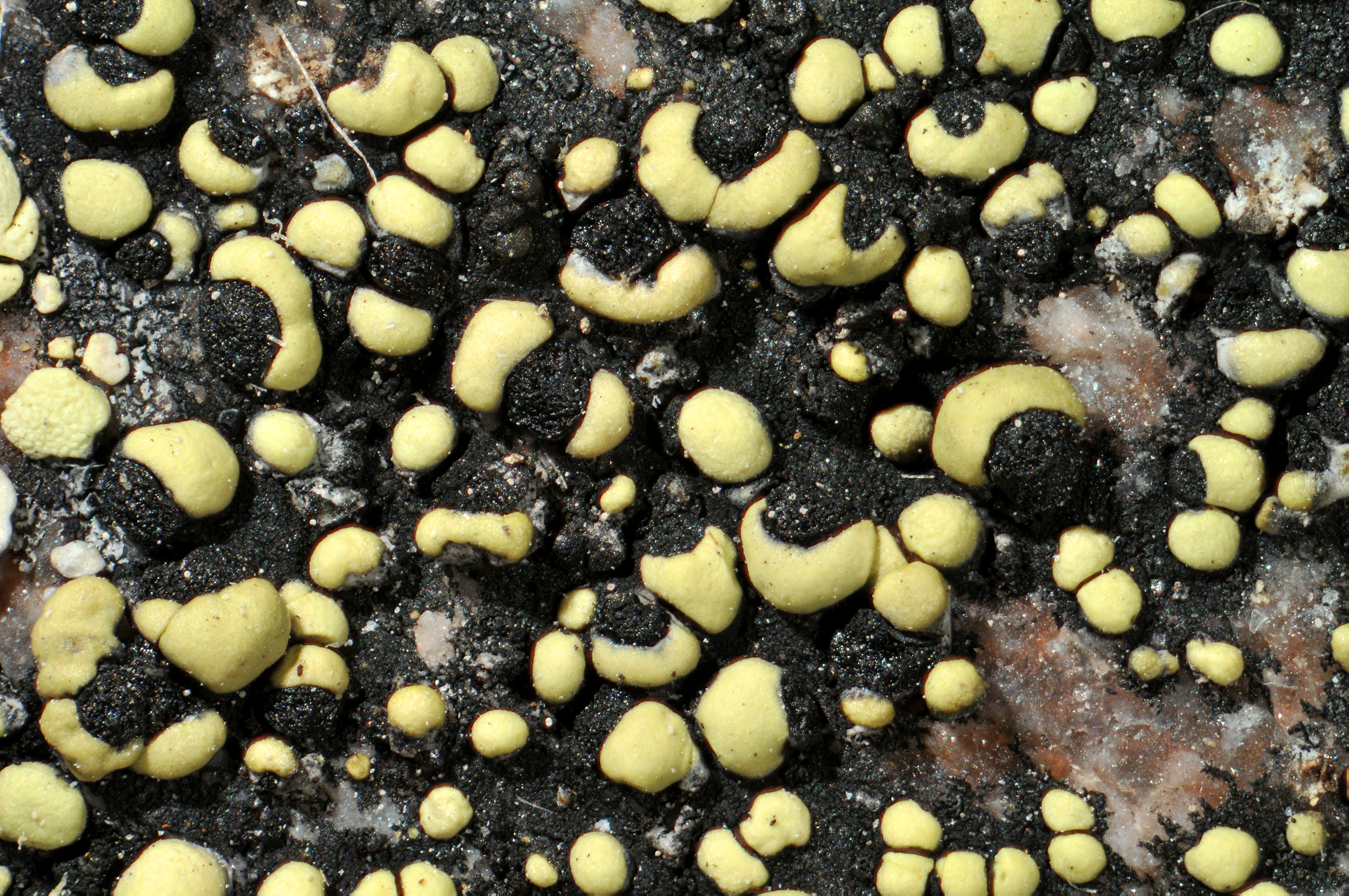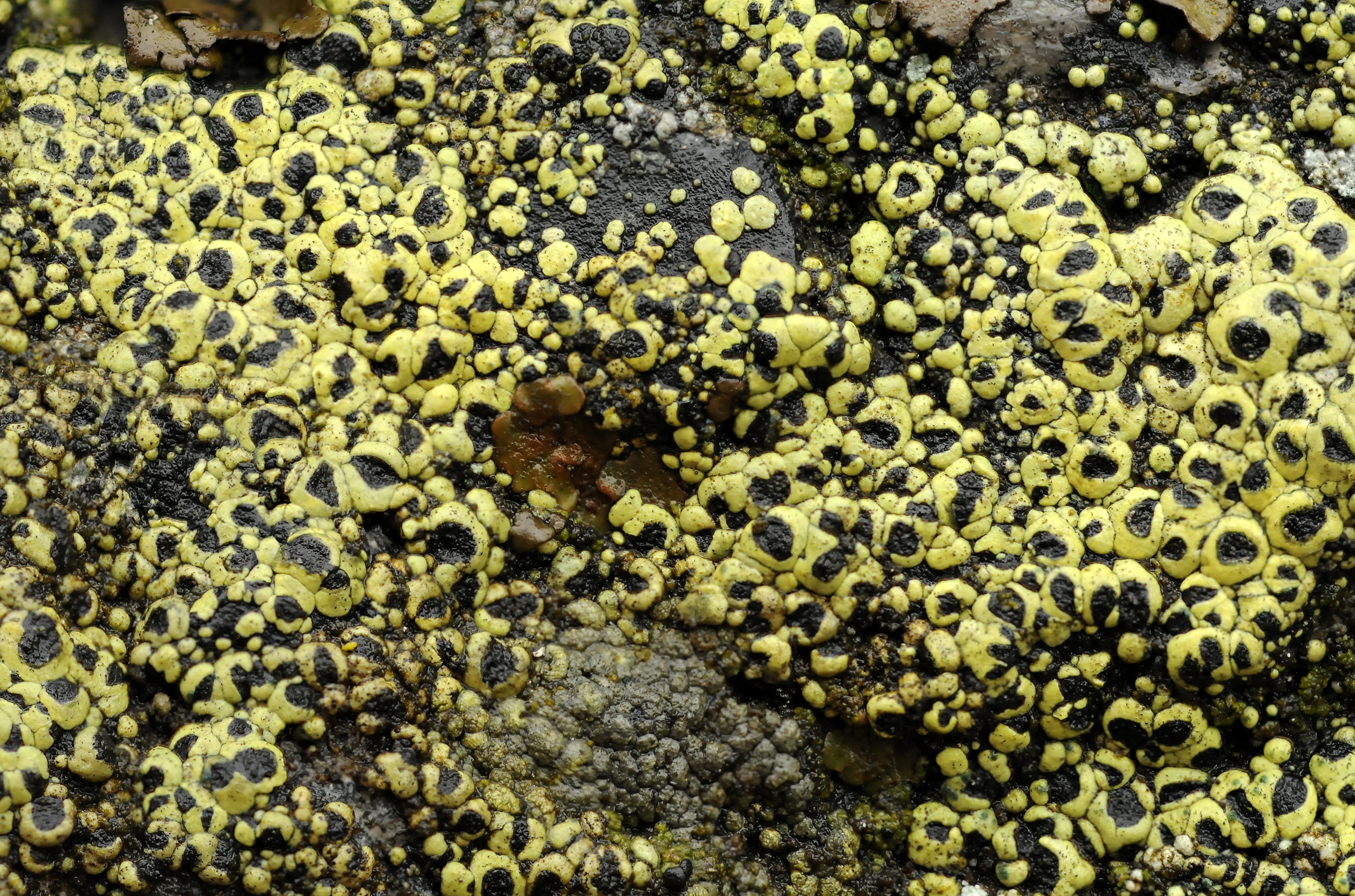Rhizocarpon ferax
- Innhold
- Morphology
- Chemistry
- Habitat
- Comment
- Look-alikes
Morphology
Thallus areolate, consisting of scattered areolae or forming a continuous thallus up to 10 cm diam.; hypothallus varying from more or less absent to well developed, black; areolae up to 1 mm diam., bright yellow, dull, partly crescent-shaped and surrounding apothecia and partly scattered and orbicular, plane to convex, smooth. Medulla KI+ dark violet. – Apothecia up to 0.8 mm diam., black, epruinose, orbicular, plane, persistently marginate. excipulum brownish black, K–; hypothecium brownish black, K–; hymenium faintly brown or green; epihymenium olivaceous brown, K– (turning brighter green); no crystals or granules in the apothecia; ascospores 8 per ascus, eumuriform, dark brown, 25–40 × 14–18 µm. – Conidiomata not seen.
Chemistry
Rhizocarpic and psoromic acid; spot tests: medulla PD+ yellow, K–, C–.
Habitat
On siliceous or somewhat calciferous rock, mainly on pebbles on the ground in exposed sites in the mountains or on vertical to overhanging rock walls in the lowlands.
Comment
The species is morphologically similar to R. lecanorinum, but differs in containing psoromic acid, not stictic acid and in having more scattered areolae.

